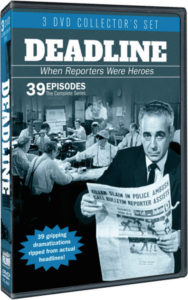
Ripped from the headlines. Literally.
‘DEADLINE’
Film Chest Media Group, $19.98
39 episodes on 3 discs
Running time: 16 hours and 46 minutes
Not rated
Review by Mark Voger, author
“Groovy: When Flower Power Bloomed in Pop Culture”
“They’re ready … they’re rolling … the presses are rolling … on ‘Deadline.’”
So declares Paul Stewart, host of the hard-boiled, newspaper-themed anthology series “Deadline” (1959-61), at the top of each episode.
“When Reporters Were Heroes” is the tagline Film Chest has bestowed upon its “Deadline” DVD set, and it’s a telling one. Are reporters heroes anymore? It depends who you ask. Rachel Maddow would say yes. Donald Trump would say no.
It’d be great to put the current media climate aside and enjoy “Deadline” for what it is: a taut drama series from another time that takes a “ripped from the headlines” approach. Literally.
Stewart assures us these teleplays are based on real newspaper stories. In the closing credits, we are told that the names have been changed except for those of the reporter and his or her paper.
Perhaps owing to the diverse source material, the syndicated series “Deadline” is frequently edgier than what the networks were dishing out in 1959.
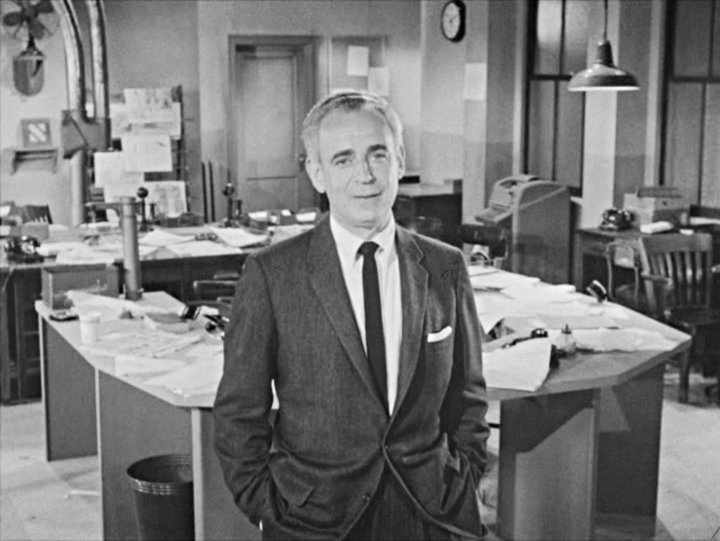
The premiere episode, “The Victor Reisel Story,” profiles the real-life New York City columnist who exposed labor racketeers in print, and had acid thrown in his face in retribution. Reisel was blind for the rest of his life, but continued his crusade through his writing and television appearances.
In “Murderess,” a young woman shoots her live-in boyfriend when he asks her to be “cooperative” with some big shots he has coming over. (This shorthand for sexual favors would likely not have passed muster with a network censor.)
“Chain Reaction” explores the profound post-traumatic stress — before the term was in popular use — suffered by a World War II veteran who flew a reconnaissance mission related to the bombing of Hiroshima. Thinking himself a mass-murderer, the tortured man plots to end his life.
“Checkmate” is the disturbing tale of a leering man who lures a teenage girl into his car. After she is reported missing, the man’s wife finds the girl’s pocketbook in their cellar.
It’s possible that these stories hit harder, and ring truer, than typical TV fare of the time expressly because they are based on actual events.
(Political incorrectness alert: One newspaper headline reads “Wetbacks invade California.” The episode, in which a reporter goes undercover as a Mexican citizen seeking help crossing the border illegally, is titled, simply, “Wetback.”)
One story, “To Move a Mountain,” hits home. From my alma mater The Star-Ledger (then known as The Newark Star-Ledger) comes the story of reporter John McDowell (played by Frank Sutton), whose life was saved by two Burmese nurses (Arabella Hong and Eileen Nakamura) during World War II. Years later, when the nurses face deportation from the United States – and certain death in Burma — McDowell successfully advocates on their behalf. There’s an aerial shot of the Newark skyline and an exterior of the Newark Star-Ledger building on Halsey Street.

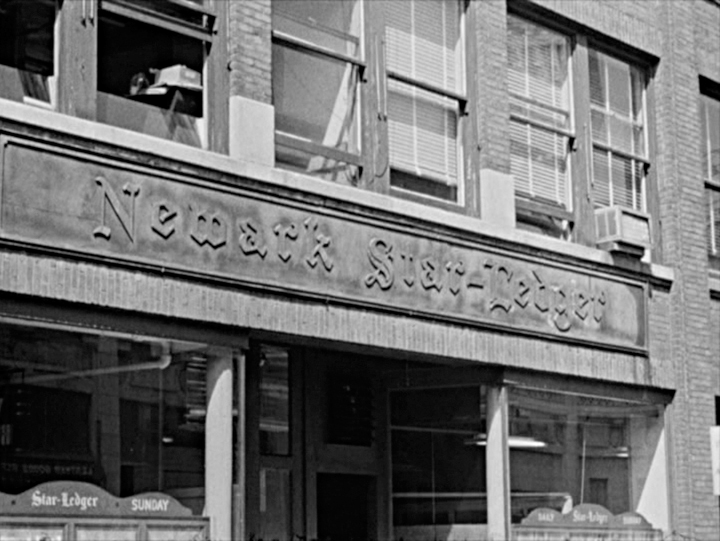
Other newspapers depicted include The Chicago Sun-Times, The Washington Times-Herald, The San Diego Union-Tribune, The San Francisco Chronicle, The San Francisco Examiner, The Arizona Republic, The Wichita Beacon, The Erie Dispatch, The Idaho Daily Statesman, and The Columbus Citizen.
Despite the focus on realism, genre tropes creep in, some deserved, some cliched. The newsroom seen at the beginning of each episode is a sea of cigarette smoke, supersized typewriters, ready inkwells and a teletype machine, manned by staffers wearing bowties, suspenders and, of course, visors. (In old movies and TV, you can’t put out a newspaper unless you’re wearing a visor.)
The professional ethics depicted are occasionally questionable, and not in a self-aware sense. In some episodes, a reporter is chummy with, or an outright friend of, the subject of a news story. (Journalistic ethics forbid this conflict of interests.) Sometimes a reporter will acquiesce too easily to directives from, say, politicians or law enforcement, or enter into an iffy quid pro quo with same.
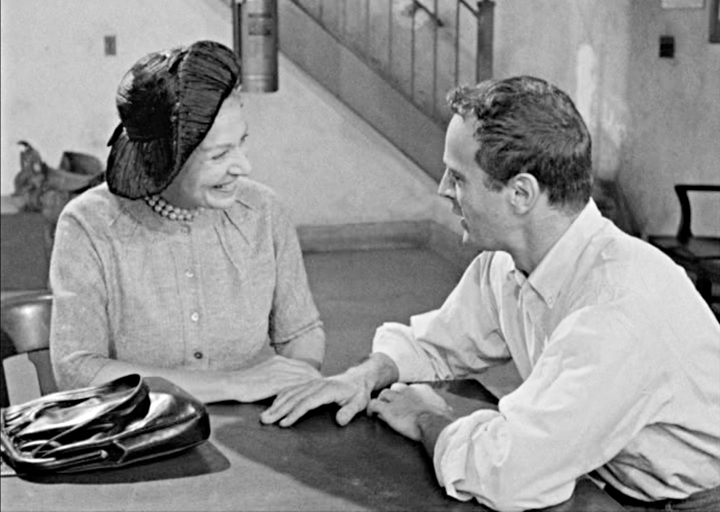
The most egregious journalistic sins are committed in “Suspicion of Murder,” in which a reporter (Edith Meiser) insists on getting the assignment to write about an accused killer (Jason Evers) who she considers “like a son to me.” When the accused is positively ID’d by the victim’s wife, the reporter suppresses that fact in print. Later, she engages in an attempt at witness tampering, however casual. The reporter’s faith in the accused is unshaken – until he confesses to the murder. (In host Stewart’s wrap-up, he does not allude to these transgressions.)
Stewart – who specialized in gruff, laconic or menacing characters in films – frequently did double-duty on “Deadline” by playing reporters in various episodes. A member of Orson Welles‘ company, Stewart was an associate producer on Welles’ infamous “War of the Worlds” radio broadcast of 1939, and had a role in Welles’ likewise newspaper-themed “Citizen Kane” (1941). Yet another prominent credit in the newspaper genre: Stewart was in the 1952 Humphrey Bogart vehicle “Deadline U.S.A.”
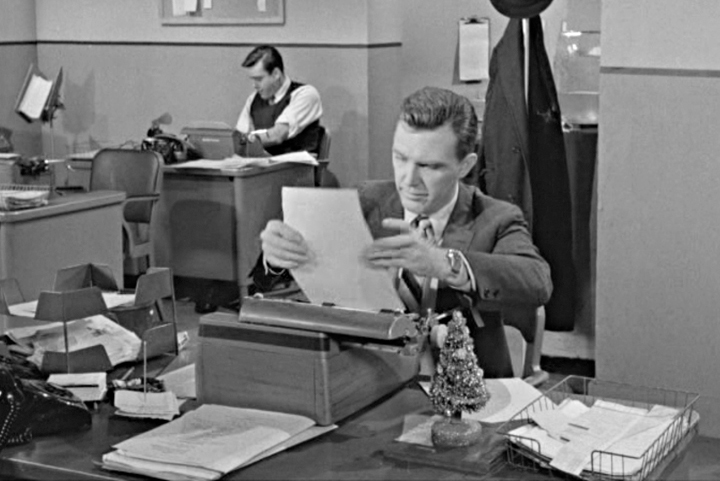
As with most anthology series from the 1950s and ’60s, there is a wealth of familiar faces. Guest stars include Peter Falk (“Columbo”), Simon Oakland (“Psycho”), Al Lewis (“The Munsters”), George Maharis (“Route 66”), Robert Lansing (“The 4D Man”), Diane Ladd (“The Wild Angels”), Malachi Throne (“Batman”), John Karlen (“Dark Shadows”) and Mickey Freeman (“Sgt. Bilko”).
The production values sometimes make clear that the actors and crew were working quickly and without as many resources as a network series. But “Deadline” is heartfelt and maintains a gritty tone, with to-the-point writing and effective episode-specific exteriors. The series often employs “canned” background music; in more than one episode, you hear unmistakable themes from Ed Wood‘s sci-fi stinker “Plan 9 From Outer Space” (1959).
It should be noted that “Deadline” followed an earlier series, “The Big Story” (1949-59), that also based its scripts on true newspaper accounts.
The “Deadline” DVD set includes a thoughtful interview with Joe Alicastro, a journalism professor at Sacred Heart University in Connecticut, on the state of journalism today vs. in 1959. Alicastro discusses depressing trends that for more than a decade have challenged the journalism field, hence our democracy: the shuttering of newspapers, the downsizing of newsroom staffs, the proliferation of “fake news,” and the labeling of news gatherers as the “enemy of the people.” An accompanying booklet includes the journalistic code of ethics as laid down by the Society of Professional Journalists. It all points to an ambitious effort by Film Chest to present the 1959 series in a 2019 context.
